3月20日,“考古中国”重大项目工作进展会在成都举行,通报了四川广汉三星堆遗址重要考古发现与研究成果。
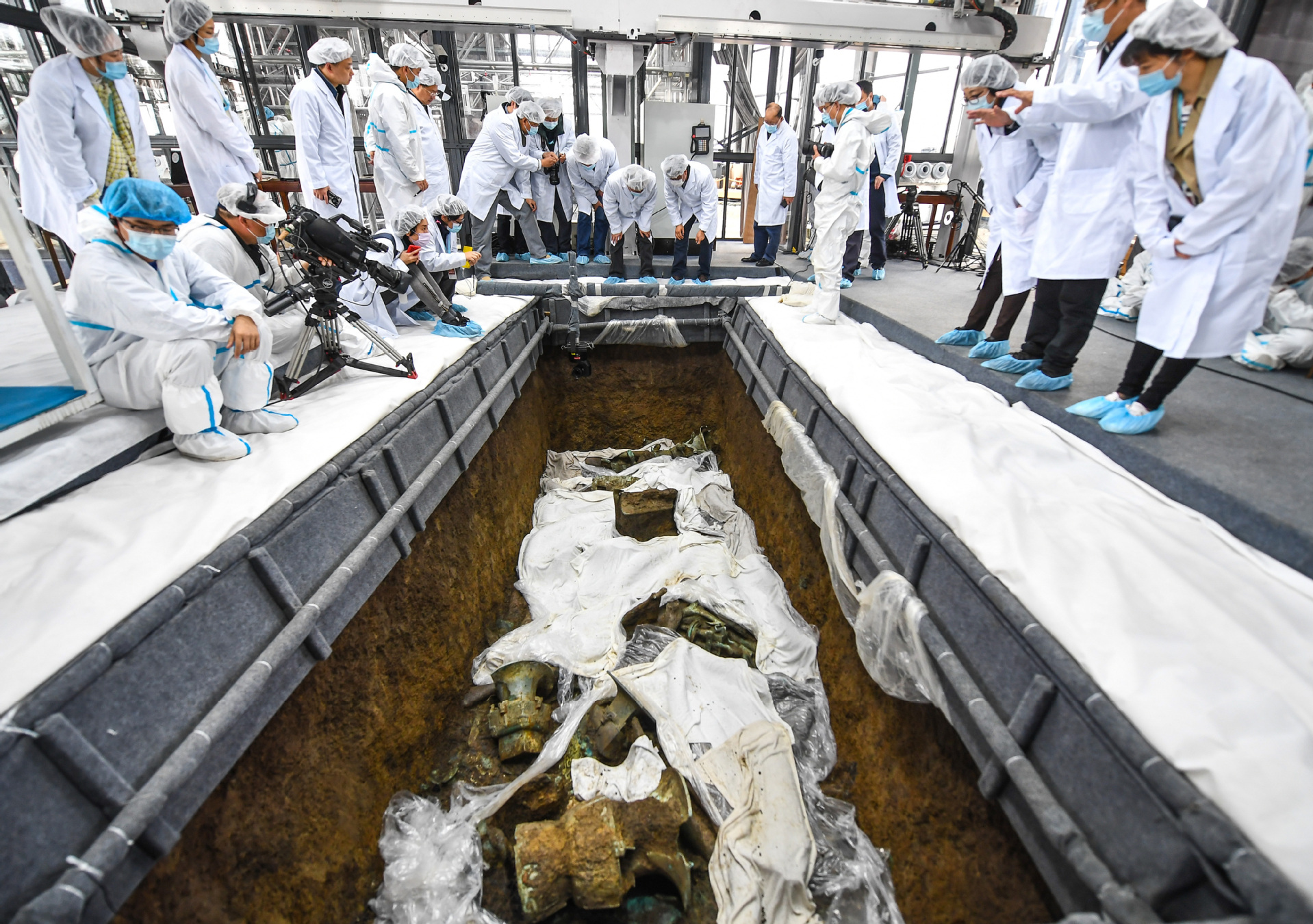
文物考古专家在三星堆遗址考古发掘现场查看3号“祭祀坑”。(图片来源:新华网)
Chinese archaeologists announced the discovery of over 500 cultural relics, during an ongoing excavation at the Sanxingdui Ruins site in Guanghan, Sichuan province. The relics were uncovered in six sacrificial pits which date back over 3,200 years.
考古学家宣布,四川广汉三星堆遗址新发现的6座三星堆文化“祭祀坑”中已出土500余件文物。此次发现的“祭祀坑”距今约3200多年。
【单词讲解】
这里的excavation来源于动词excavate,在考古领域表示“to remove earth that is covering very old objects buried in the ground in order to discover things about the past”(为了研究历史,将埋在地底下的老物件挖出来),即“发掘文物”,比如:She has taken part in several excavations of Roman settlements across Europe.(她参加了好几次欧洲罗马人定居点的文物发掘工作)。
Among the important cultural finds are gold and bronze masks, bronze ware, more than 100 ivory tusks, textiles and jade among other artifacts.
出土的重要文物包括金面具、铜面具、铜器、100多个象牙、纺织物以及玉器等其他工艺品。
【单词讲解】
在考古领域挖掘出来的“(工具、武器、饰品等具有考古或历史价值的)文物”一般用artifact。而我们常见的cultural relics里面的relic则指“遗迹、遗留物、遗址”等。在表示“历史遗迹”的时候,relic涵盖的范围要比artifact要广一些,而且这两个词一般都用复数形式。
新发现的五号坑出土大量黄金制品
A gold mask has been unearthed at the No5 sacrificial pit. With an area of about three square meters, it is the smallest pit, but it's where the most gold pieces were unearthed, according to archaeologists.
五号祭祀坑面积大约3平方米,是最小的一个坑,但其中出土的黄金制品最多,其中包括一个黄金面具。
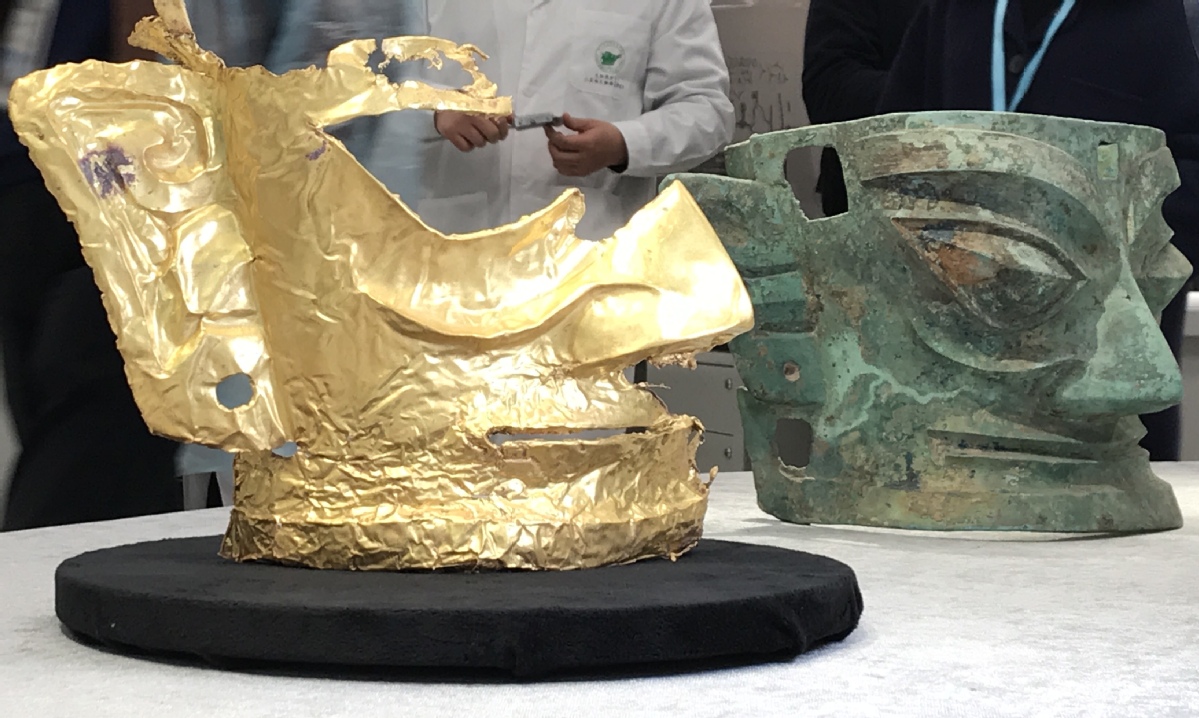
五号坑出土的黄金面具(图片来源:中国日报)
出土文物“上新”
In No 3 pit, a rich reservoir for bronze ware, archaeologists found two square zun jars, a typical ancient Chinese bronze ritual vessel. Such artifacts were not found in 1986. Some of the bronze ware items have been decorated with dragon and ox patterns.
在三号坑,考古学家发现了大量青铜器,其中有两个正方形青铜尊,是中国古代典型的青铜祭器。其中一些青铜器上面还装饰有龙、牛的图案。这些文物都是1986年发掘时没有发现的。
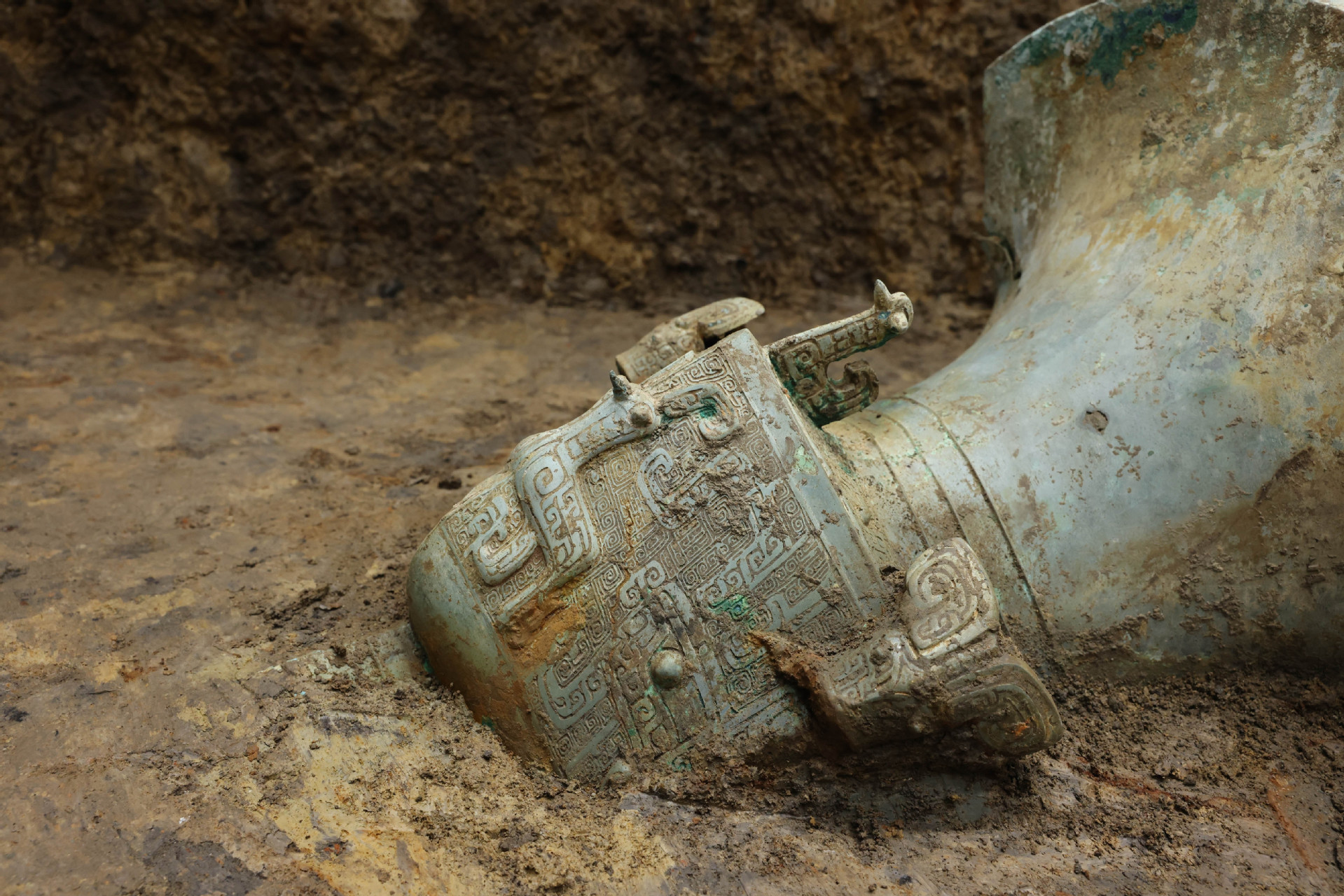
本次三星堆遗址祭祀区考古发掘中K3(3号坑)出土的铜尊局部。(图片来源:新华网)
In the No 6 pit, a 1.5-meter-long and 40-centimeter-wide wooden box covered in cinnabar has brought a new mystery. A plan to open it is still being drafted.
在6号坑发现了一具“木匣”,长约1.5米、宽约0.4米,内外均涂抹朱砂。这个木匣给考古工作带来了新的谜团。考古人员还在讨论“开匣”方案。
Other important items include decorative gold items in the shape of birds, ivory and bone carvings, silk and cong.
其他出土的重要文物包括,小鸟形状的黄金饰品、象牙、骨雕、丝绸以及玉琮等。
The recent discoveries further confirm the theory that the pits were used for sacrificial purposes as many of the items found had been smashed and burned before being buried. Further study is needed to rule out any other speculation as to the pits usage.
这次的发现进一步证明,这些坑洞是为祭祀所用,因为出土的很多文物在埋之前已经被打碎并烧毁。需要更深入的研究来排除这些坑洞有其他用途的猜想。
发掘工作充分利用高科技
In the process of excavation, archaeologists made full use of modern technologies to ensure the safety of the relics and sound management of relevant data and materials.
在发掘过程中,考古学家充分利用现代技术确保文物的安全以及相关数据和材料的高效管理。
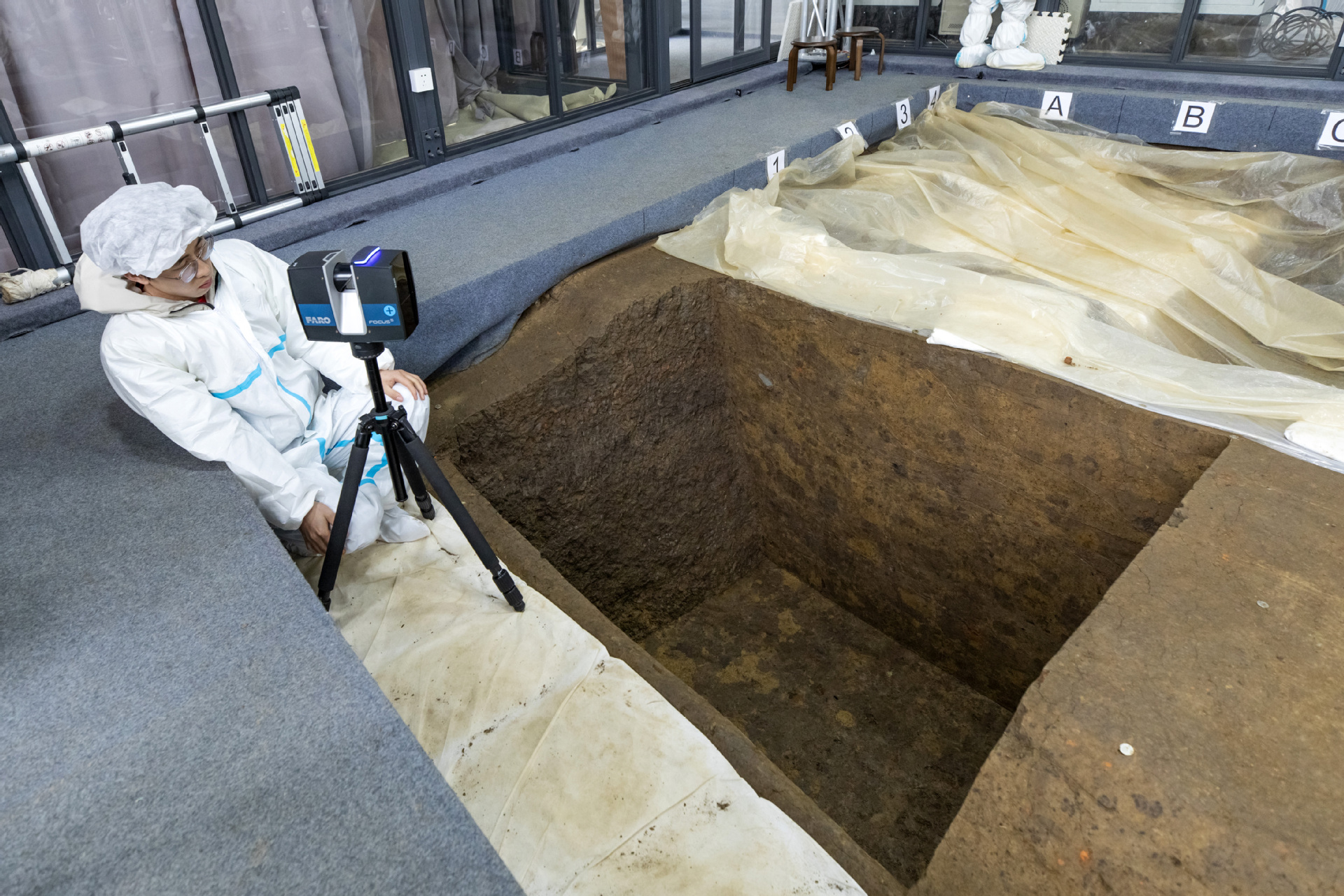
在三星堆遗址考古发掘现场,考古人员用三维激光扫描仪扫描7号“祭祀坑”,并将利用扫描数据建立该“祭祀坑”的3D模型。(图片来源:新华网)
【知识点:关于三星堆】
The Sanxingdui Ruins is dubbed as one of the world's greatest archeological discoveries of the 20th century.
三星堆遗址被称为20世纪全世界最重大的考古发现之一。
Located in the city of Guanghan, Sichuan province, around 60 km from the provincial capital Chengdu, the ruins covering an area of 12 square km are believed to be the remnants of the Shu Kingdom, dating back some 4,800 years to 3,100 years.
三星堆遗址占地面积12平方公里,位于四川广汉,距离成都约60公里,是古蜀文化遗址,距今4800年至3100年左右。
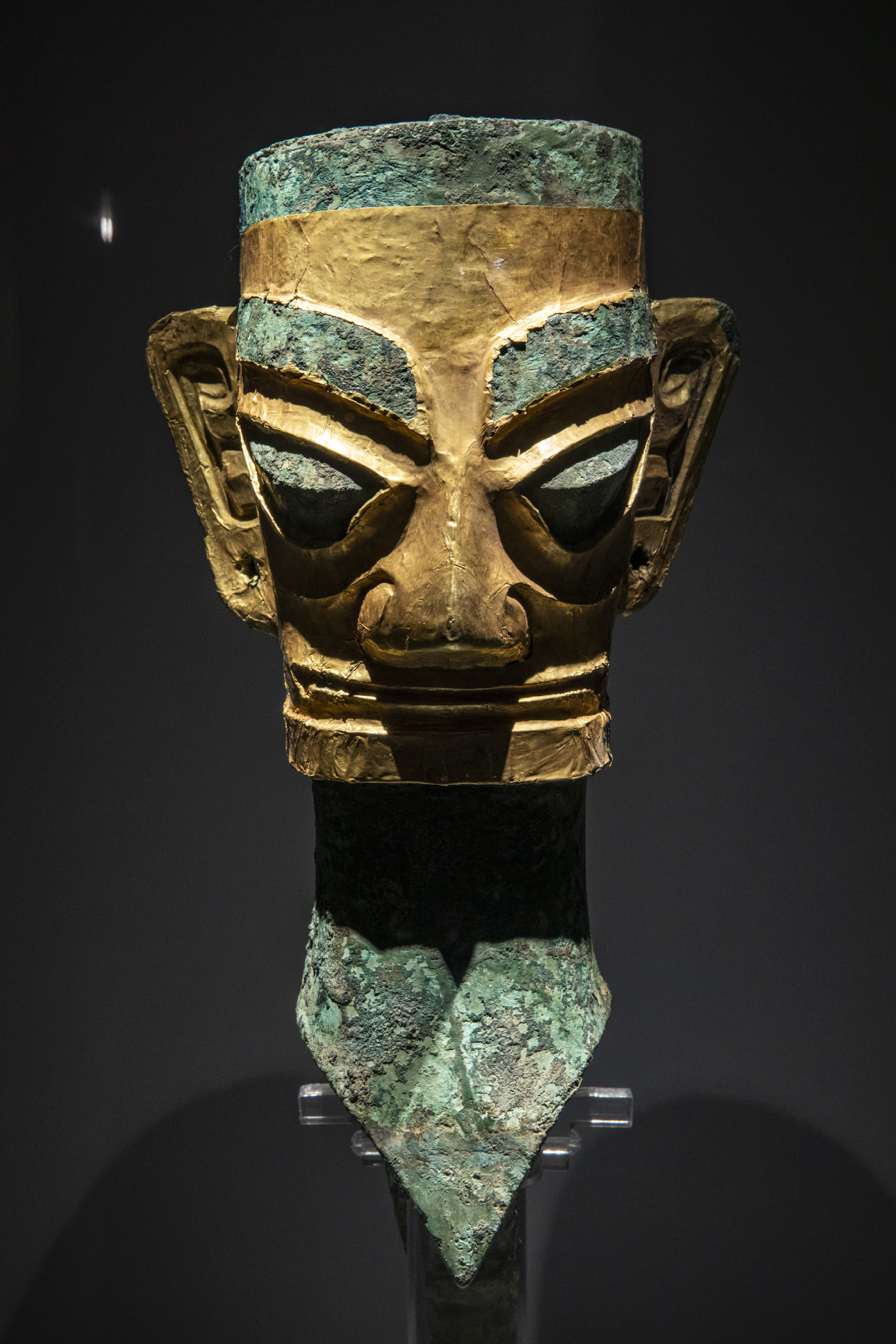
三星堆博物馆拍摄的“戴金面罩青铜人头像”。该文物于1986年从三星堆2号“祭祀坑”出土。(图片来源:新华网)
The site was originally discovered in the 1920s by a farmer. A huge surprise came in 1986 when two sacrificial pits filled with more than 1,000 relics, including gold masks, bronze sacred trees, bronze ware, jade ware and ivory, were discovered by local workers excavating clay for bricks.
该遗址最初由一个农民在上世纪20年代发现。1986年,当地工人挖土烧砖时意外发现了两个祭祀坑,里面有1000多件文物,包括金面具、青铜神树、青铜器、玉器、象牙等。
In 1988, the Sanxingdui Ruins site was put under State-level protection.
1988年,三星堆遗址被列为国家文物保护单位。
【相关词汇】
文化遗产 cultural heritage
文化自然双重遗产 cultural and natural heritage
文化多样性 cultural diversity
文化资源整合 integration of cultural resources
历史文化遗产 historical and cultural heritage
考古能力建设 archaeological capacity building
参考来源:新华网、中国日报网
(中国日报网英语点津 Helen)